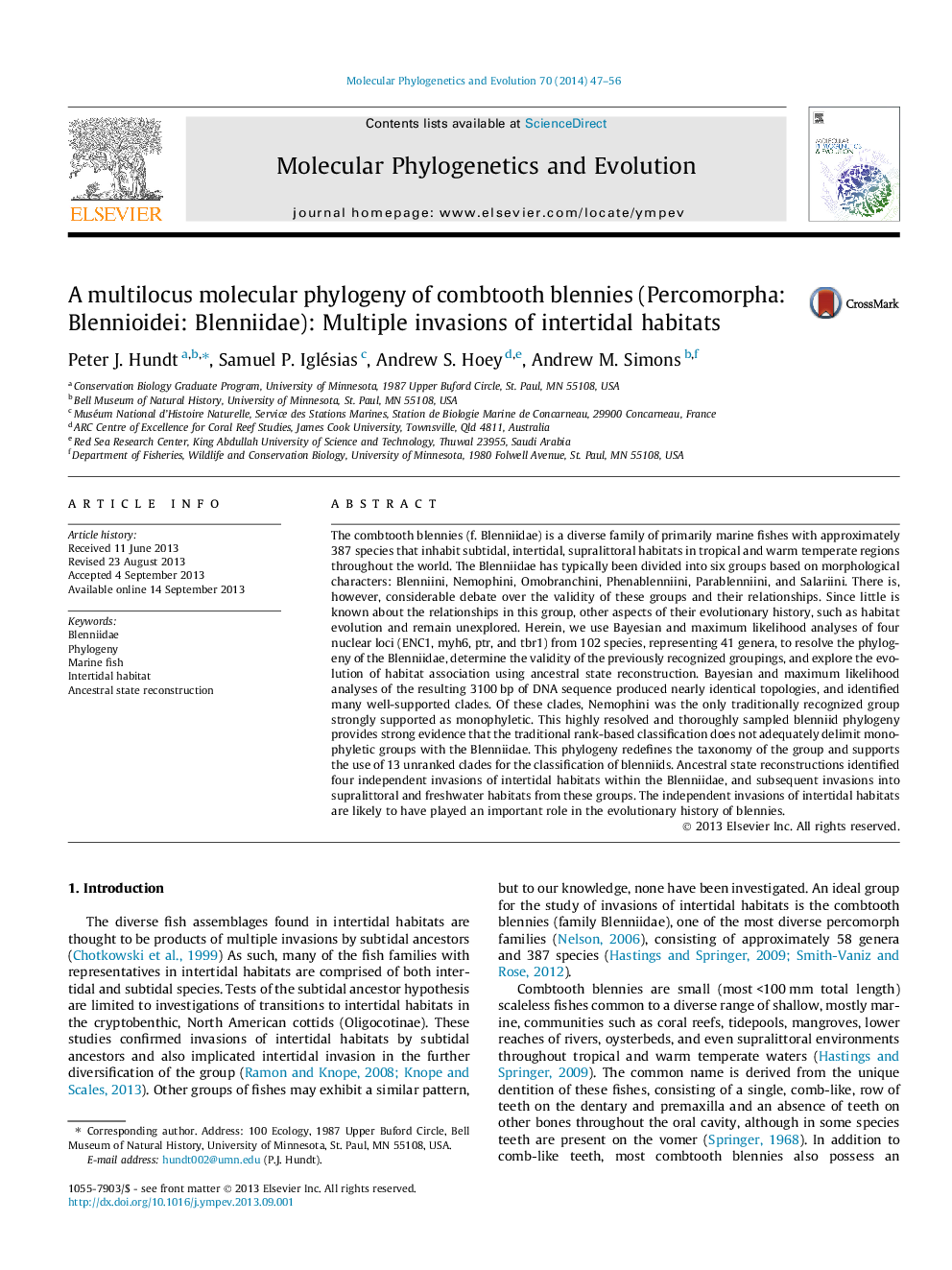| کد مقاله | کد نشریه | سال انتشار | مقاله انگلیسی | نسخه تمام متن |
|---|---|---|---|---|
| 5919345 | 1570825 | 2014 | 10 صفحه PDF | دانلود رایگان |

- The phylogenetic relationships of combtooth blennies are resolved using four nuclear loci.
- The taxonomy of combtooth blennies is redefined to maintain consistency with phylogeny.
- The ancestral habitat of blennies is likely subtidal.
- Four independent invasions of intertidal habitats were identified.
The combtooth blennies (f. Blenniidae) is a diverse family of primarily marine fishes with approximately 387 species that inhabit subtidal, intertidal, supralittoral habitats in tropical and warm temperate regions throughout the world. The Blenniidae has typically been divided into six groups based on morphological characters: Blenniini, Nemophini, Omobranchini, Phenablenniini, Parablenniini, and Salariini. There is, however, considerable debate over the validity of these groups and their relationships. Since little is known about the relationships in this group, other aspects of their evolutionary history, such as habitat evolution and remain unexplored. Herein, we use Bayesian and maximum likelihood analyses of four nuclear loci (ENC1, myh6, ptr, and tbr1) from 102 species, representing 41 genera, to resolve the phylogeny of the Blenniidae, determine the validity of the previously recognized groupings, and explore the evolution of habitat association using ancestral state reconstruction. Bayesian and maximum likelihood analyses of the resulting 3100Â bp of DNA sequence produced nearly identical topologies, and identified many well-supported clades. Of these clades, Nemophini was the only traditionally recognized group strongly supported as monophyletic. This highly resolved and thoroughly sampled blenniid phylogeny provides strong evidence that the traditional rank-based classification does not adequately delimit monophyletic groups with the Blenniidae. This phylogeny redefines the taxonomy of the group and supports the use of 13 unranked clades for the classification of blenniids. Ancestral state reconstructions identified four independent invasions of intertidal habitats within the Blenniidae, and subsequent invasions into supralittoral and freshwater habitats from these groups. The independent invasions of intertidal habitats are likely to have played an important role in the evolutionary history of blennies.
Journal: Molecular Phylogenetics and Evolution - Volume 70, January 2014, Pages 47-56